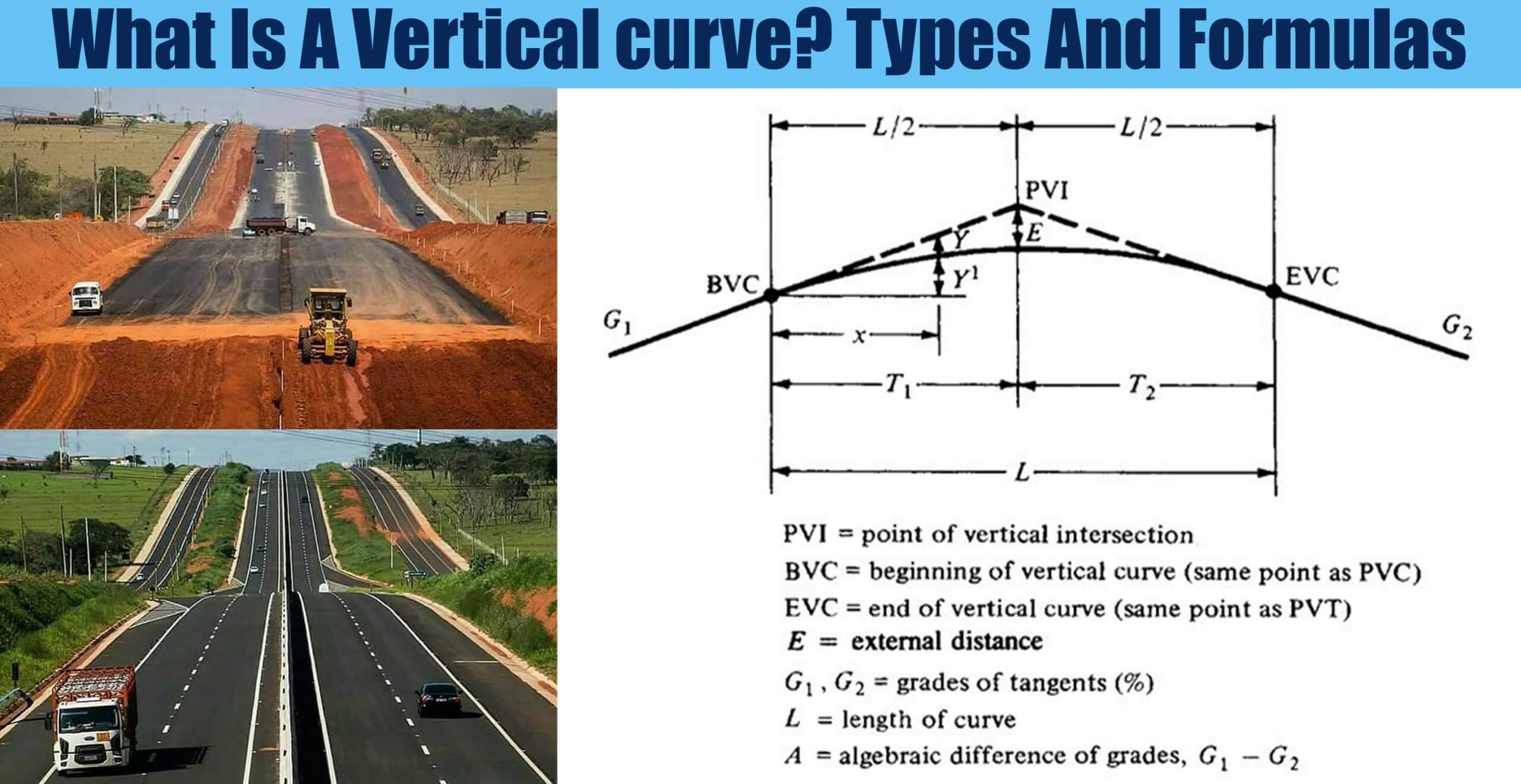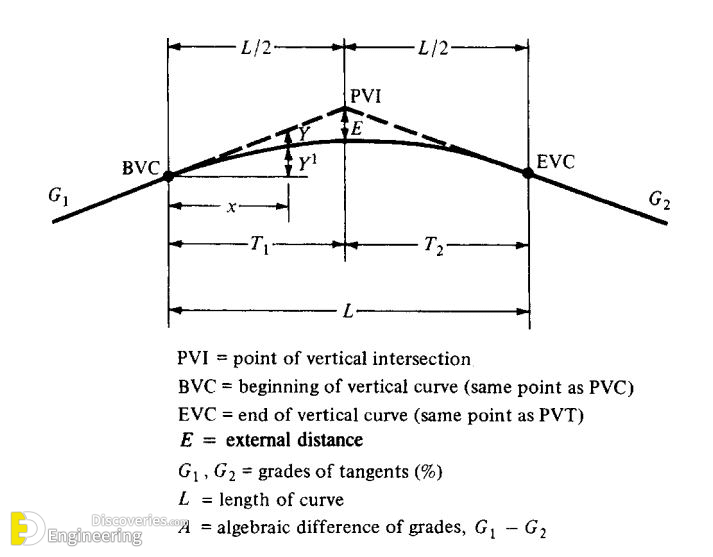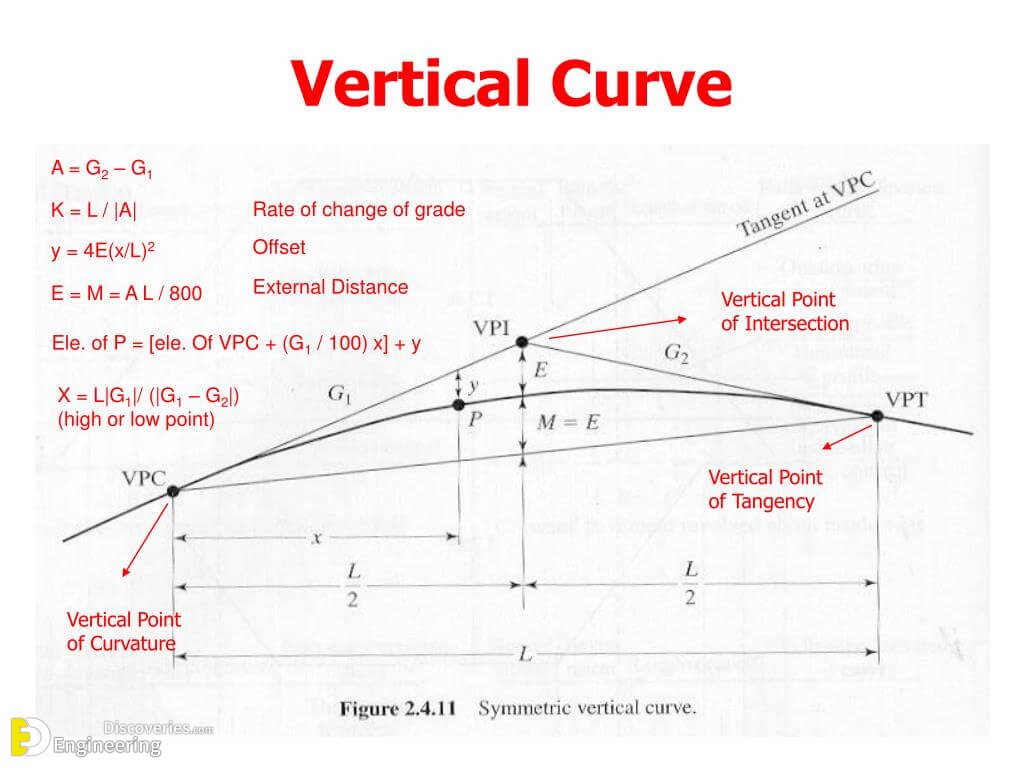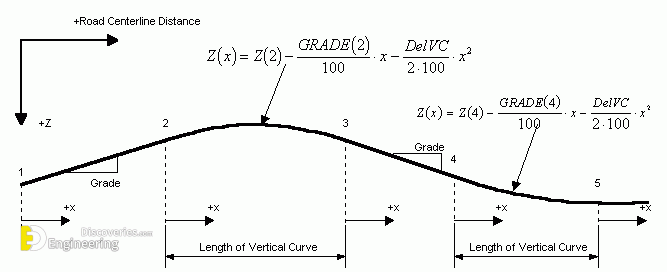The curve in a vertical alignment which is produced when two different gradients meet is known as vertical curves. It is provided to secure safety, safety, appearance and visibility. The most common practice has been to use parabolic curves in summit curves. This is because of the ease of setting it out on the field and the comfortable transition from one gradient to another. Furthermore, the use of parabolic curves gives excellent riding comfort. In the case of valley curves, the use of cubic parabola is preferred as it closely approximates the ideal transition requirements.
Types of vertical curves
Depending upon the shape of profile, a vertical curve may be divided into:
1- Summit curve / Crest Curve
When two grades meet at the summit and the curve will have convexity upwards, the curve is simply referred to as summit curve.
Valley (Sag) curve
When two grades meet at the valley (sag) and the curve will have convexity downwards, the curve is simply referred to as the valley (sag) curve.
For More Information Watch This Video

















